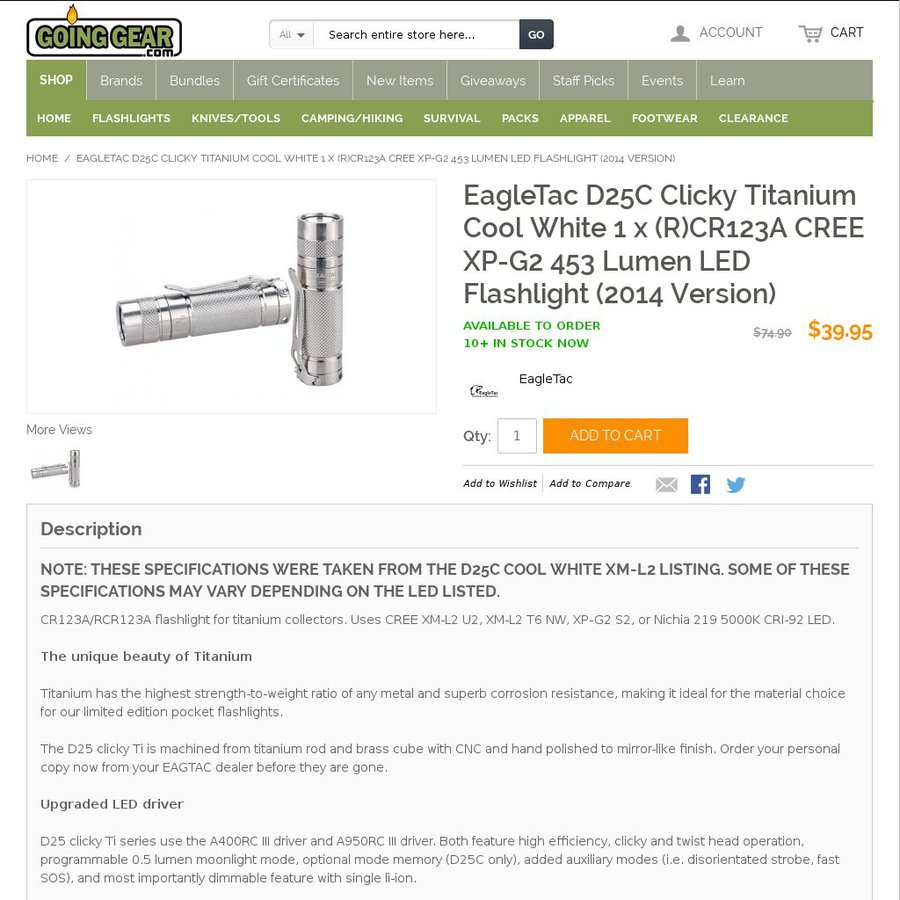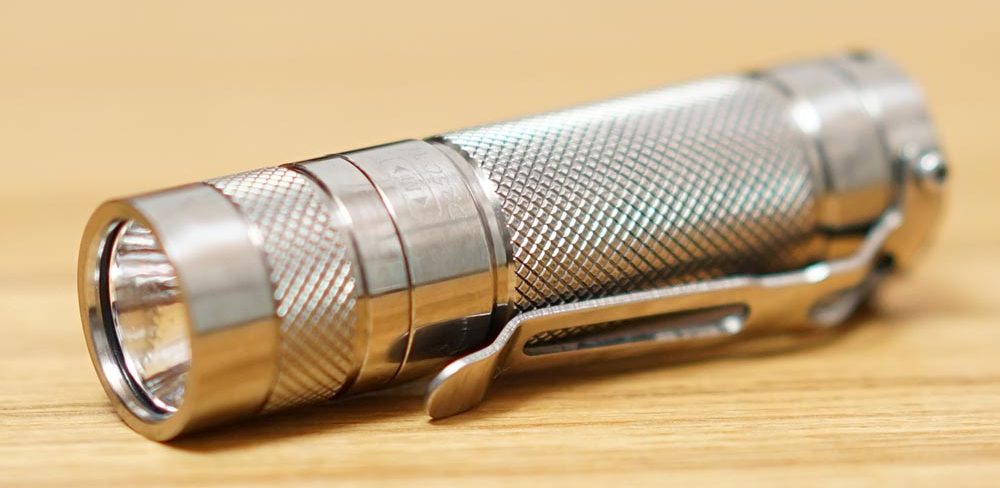

In fact, it doesn’t use PWM to modulate the modes – what we see is what I call “sawtooth” and the light doesn’t go to an off state in the valley (which is a hallmark of PWM). I’ve seen some forum posts about this light having PWM. This order is not what you can click through and experience… But the lowest output is on the left and the highest on the right.

The order of these PWM graphs is from lowest to highest. ^ These official specifications are taken from the similar Eagtac D25C Clicky MkII, which also includes a Nichia 219c version. But getting from the car to my house, or from the desk to the bathroom in the dark – even the non-400 lumen modes are more than adequate. For example, I’m not trying to see across a field with this light. Sure, 400 lumens isn’t all that high, but I’ve found the output levels to be perfectly adequate when paired with an appropriate task. Otherwise, the runtimes look pretty great – we see fairly flat output on anything but Turbo, and even Turbo holds for a little while before stepping down. The lack of low voltage shutoff is a downside (yes, it is) but, there’s truly ample warning in the form of a blinking emitter (you’ll not miss that). I thought that 1.47V might just be a cell shutoff, but on bench power, the shutoff does seem to be around 1.4V, actually. In every test, the shutoff appeared to be 1.47V, which is extremely low for a 16340 cell. This alert becomes slower (more off than on) and eventually the light does turn off. Toward the end of the cell life, the main (“only”) emitter blinks off and on to alert about low voltage. I did not have any flat-top cells to test, but I’m fairly certain you’ll need button-top cells for this light.

The cell is installed in the usual way – positive terminal toward the head. All of my testing was performed with a 16340.

Power to the Eagtac D3C Titanium flashlight is provided by either a single 16340 cell (lithium-ion, 4.2V) or a single CR123a (1.8V). I test output and such in PVC tubes!! Please consider claims within 10% of what I measure to be perfectly reasonable (accurate, even). I don’t have $10,000 or even $1,000 worth of testing equipment. ^ Measurement disclaimer: I am an amateur flashlight reviewer. It’s been released for a while, yes, but the emitter options have kept up to date, so it’s still very relevant! Long Review The Big Table Eagtac D3C Titanium Flashlight It could be stated that this light is “dated” but it’s not really. Another potential downside is the user interface, but that’s strictly a preference thing – I find it quite useful really. The light doesn’t seem to have low voltage protection. That this light uses a 4000K high CRI Nichia 219c is great, too! It can run on multiple cell types. There are a bunch of things to like about the Eagtac D3C Titanium flashlight. The Eagtac D3C Titanium flashlight sells for $79.90 at (referral link.) This is an essentially identical light to the D3C Titanium, but it’s aluminum. My copy is a Nichia 219c, and I think that’s a fantastic choice for this host.Īlso worth mentioning in this section is the D25C Clicky MKII. There are at least three emitter options, and you might see even more listed on some websites. This product specifically has only one body option. Here’s a link to the Eagtac D3C Titanium product page. This one has a Nichia 219c emitter with 4000K and High CRI. The Eagtac D3C Titanium flashlight offers a lot in a little package.


 0 kommentar(er)
0 kommentar(er)
